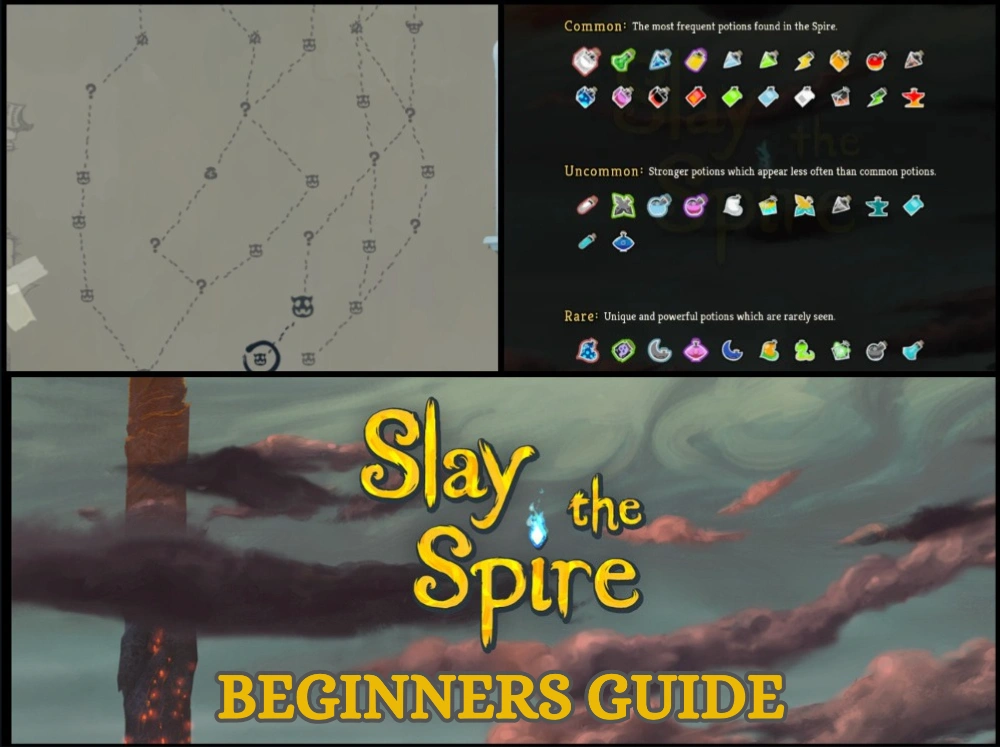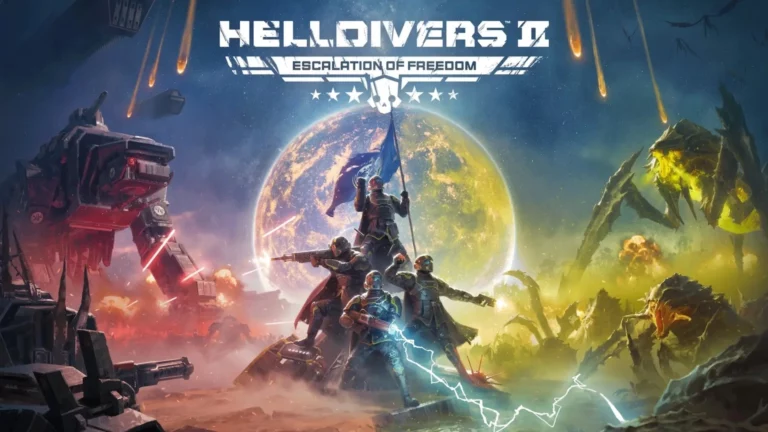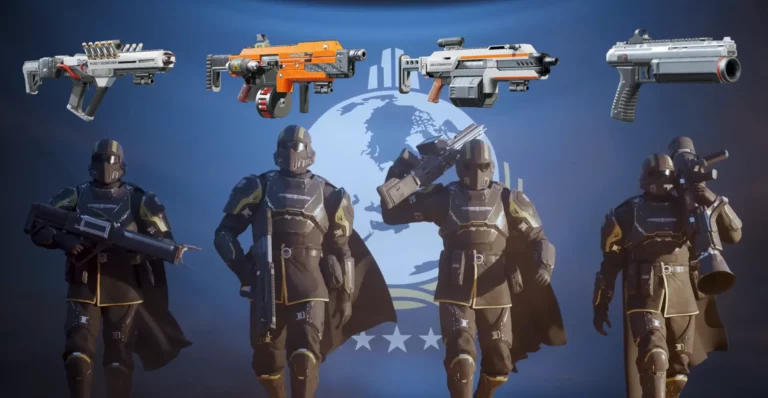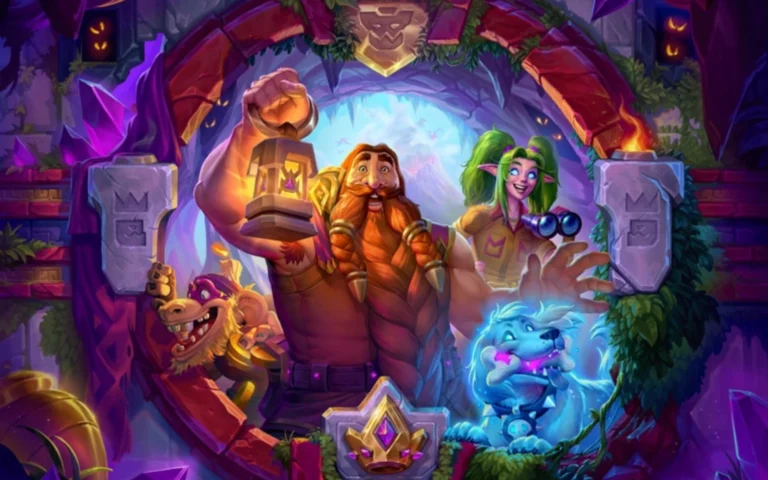In this Slay the Spire beginners guide, we are going to cover all the basics that you will need in order to understand the game in general. Created by Mega Crit, Slay the Spire is one of the most well-received indie games of all time. With overwhelmingly positive reviews on Steam, this game has cemented itself at the top of the roguelike genre. Even though it came out in 2019, it still boasts an impressive base of over ten thousand active players.
The game was so successful that Mega Crit announced a sequel that’s set to be released in early 2025. As a result, a lot of players are back playing the original game while waiting for the second iteration. You might have heard of the popular deck-builder STS before, but this is your first time playing it. If so, you came to the right place. In this Slay the Spire beginner’s guide, we’ll go over the basic mechanics of this iconic roguelike, learn some tips to help you improve quickly, and show you common mistakes to avoid.
Overview
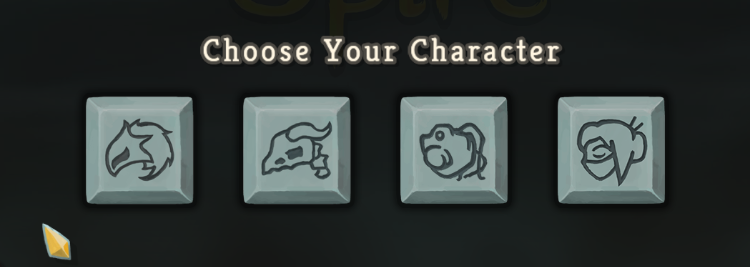
Let’s start with the basics. The goal of the game is to make your way through the “spire”, defeating various enemies along the way. You beat the game by defeating the final boss.
However, since Slay the Spire is a roguelike, every failure and every win actually just resets the game. To explain, once you beat the final boss, you unlock Ascension mode, and you get to climb the spire all over again. We’ll talk more about Ascension mode further down the article.
For now, let’s note that there are 4 main playable characters: the Ironclad, the Silent, the Defect, and the Watcher. All characters start with basic attacks and defend, but each of them has their own unique mechanics. In this guide, we’ll mostly be focusing on general advice, although it’s important to note that all characters have their pros and cons.
Basic Mechanics
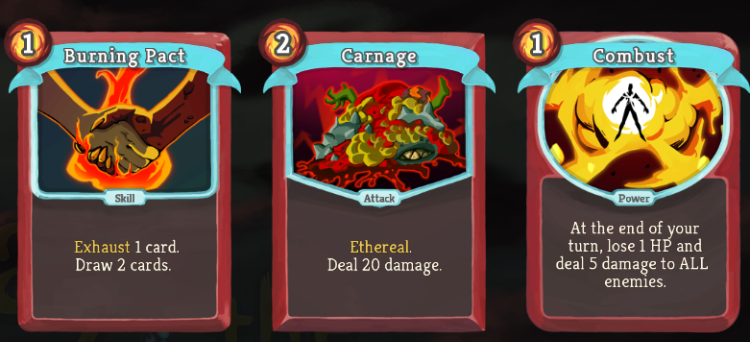
Since STS is a deck-builder, the goal is to – you guessed it – build a deck of cards strong enough to defeat enemies. There are 3 basic card types in the game: attacks, skills, and powers. Attacks are cards that do damage to the enemy, skills give you defense or other effects, and powers provide benefits that last the whole fight.
To play cards, you have to spend energy. All characters start with 3 energy per turn, but there are ways to gain more as you play the game. The energy cost of playing each card is noted on the card itself, while some can even be played for free.
Similarly, you draw 5 cards per turn. Given the limitations of draw and energy, you have to carefully think about which cards you’re going to play. As you build your deck, you can make up for these limitations – for example, if you have a lot of high-cost cards, you can increase the amount of energy you gain per turn using relics.
Advanced Mechanics
Relics
Relics are basically items that offer permanent effects on your whole run. There are over 150 total relics in the game, each with its own special benefit. You start each run with a starter relic (which differs based on the character you’re playing), and you get others through events and by defeating elite enemies.
Other than the starter, the relics are divided into: common, uncommon, rare, shop, event, and boss. The first three refer to the rarity of “normal” relics you get while playing the game, shop relics can only be bought in shops, and event relics can only be acquired through certain events. Pretty logical.
Boss relics, which you get when you defeat a boss, tend to be stronger than others. Some of them give you energy per turn (but you have to pay a price), others offer other game-changing benefits. For relics, that’s all you need to know for the Slay the Spire beginner’s guide.
Potions
Potions are items that can only be used once. Each character starts with three potion slots. You can get potions by defeating enemies, buying them at the shop, getting specific events, etc. Different potions have different effects, including dealing damage, healing, applying status effects, etc. FYI, there’s a total of 42 potions in the game.
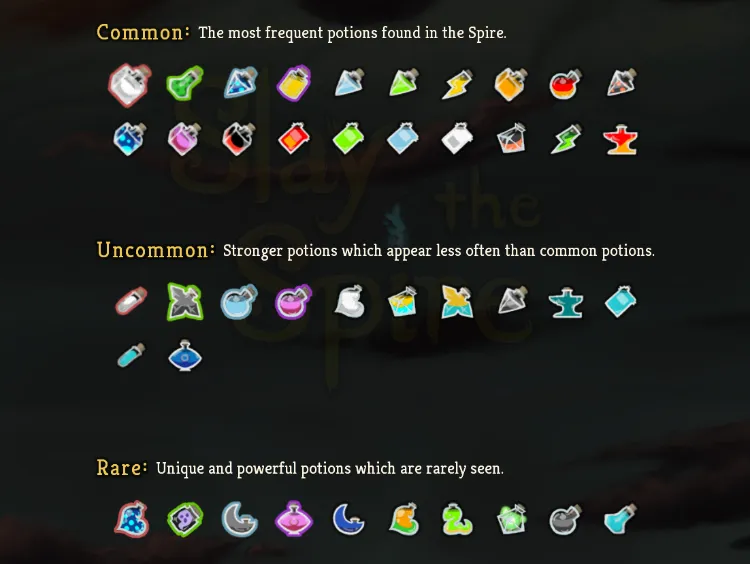
Gold
Finally, gold is one of the most important mechanics in the game. You primarily get gold by defeating enemies, although some events and even relics can give you gold. It’s used in shops where you can buy cards, relics, potions, or remove cards you don’t want in your deck (curses, for example).
Shops are marked on the map. As a general rule, you don’t want to go to every shop since you likely won’t have enough gold to spend. It’s much better to save up until you have enough to buy what you need.
Obviously, you won’t know what the shop will have in stock, except for card removal which is always an option. Card removal is very important in Slay the Spire, as it allows you to thin your deck and draw cards you want faster. Keep in mind that the price of removing a card from your deck increases each time you do it.
Early Game Tips and Strategy
Choosing the right path
A lot of beginners ignore one of the most important aspects of this game – the map. The map gives you a lot of information about your run, and it allows you to plan ahead. As a result, choosing the right path can be the difference between a loss and a win.
In general, you want to avoid elite fights super early. Elites are special enemies that drop better rewards when defeated, but they are also much harder than normal enemies. Make sure you’ve added a few offensive cards early before heading into an elite fight.
Usually, you want a path with a few campfires and a shop (provided you have enough gold). There’s an ongoing debate on whether question marks are better than fights, so make sure you get a balance of both. Also, don’t tunnel-vision – if you want to change your path mid-way, feel free to do so.
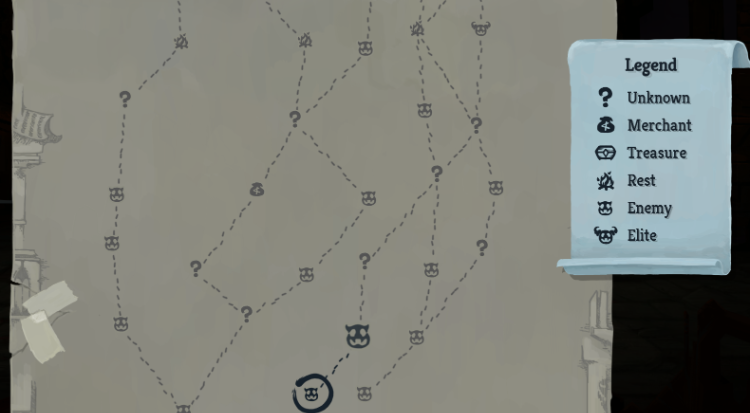
Building the right deck
Don’t pick up every card you see. You want to take cards that go well with your other cards and relics, and add to the overall strategy you’ve created for the run. For example, if you’re running one of the Ironclad deck builds and you are focusing on Armor and Strength, you’ll want to take cards that scale with that.
Similarly, adding too many cards can make you draw your best cards (win conditions) too late in the fight. However, keep in mind that you need to add both offense and defense somewhat quickly in order to defeat elites and the act 1 boss. Again, don’t be afraid to pivot from a strategy if you get a high-value card that you can build around.
Strategizing around relics
Relics are extremely powerful and can even change the way you play your run. For example, if you get an early relic that gives you strength when you play three attacks per turn, you may want to prioritize getting cheap attacks you can play often. Make sure to keep an eye out for helpful relics in the shop, too.
In general, STS players avoid separating cards and relics into “good” or “bad”, since most of them are good in certain situations but bad in others and vice-versa. However, after a bit of trial and error, you’ll learn which relics are more important for your current run and should be strategized around.
Slay the Spire: Mid to Late Game Strategies
Building powerful combos
In general, you want to take cards that synergize with each other to build combos. There are a lot of combos in the game. For example, you can create a poison-focused deck with the Silent, and prioritize taking cards that go well with that archetype.

Dealing with bosses
The map allows you to see which boss you’re going to fight in that act, including the final boss. This is crucial information as it allows you to plan ahead and adapt your deck to the fight. Some bosses require you to put a lot of block consistently, while others may need to be killed quickly before they scale out of control.
If you’re not prepared for the boss fight, try and find a workaround. You may want to save some important potions or search for specific cards or relics that will help you. This does require some knowledge of boss patterns, so don’t be discouraged if you don’t get it right immediately.
Managing curses and status cards
Some enemies and bosses add status cards to your deck, you want to be prepared for that by increasing draw, finding ways to exhaust cards from your hand, or discarding them. Similarly, don’t forget to remove unwanted curses from your deck at shops!
Pro tip: Some curses can give you surprising benefits. Sometimes it might be worth it to keep a curse instead of prioritizing removal. Make sure to check your relics and other cards to see if a curse is as bad as it seems.
Beginner Mistakes in Slay the Spire
Taking too many cards
Beginner STS players often take cards after every fight, which can do more harm than good. In general, the less cards you have – the more consistent your deck is. That doesn’t mean the fewer cards the better, it just means that you should be picky about which cards you’re adding and whether they synergize with the rest of your deck.
Resting at every campfire
We get it – healing is great and keeps you alive longer. However, there is an opportunity cost associated with resting – you don’t upgrade cards as much. As a result, your deck is worse, which can result in a loss later on in the run.
Tunnel visioning on one strategy
Although Slay the Spire is strongly considered to be a skill based game, there is some RNG and luck involved. As a result, it’s not really viable to “pick” a strategy early and stick to it, since there’s no guarantee you’ll get important relics/cards for that strategy. In turn, you should be flexible and play the run you’re given, not the perfect run you might be looking for.
Poor gold management
Finally, a common mistake beginners make is they spend all of the gold they have ASAP. Now don’t get me wrong, hitting shops in STS is important (you don’t want to end a run with 500+ unused gold), but sometimes it’s better to save up than to spend it all in one shop. Plan for the future and don’t go to every shop on the map.
Ascension Mode
With the tips from our Slay the Spire beginner’s guide, you’ll be defeating the final boss in no time! Only to find out… you’ve only beaten ascension 0. There are 20 total “ascensions”, which are basically game modes of increasing difficulty.
Each ascension comes with its own set of challenges, such as harder enemies or less gold. As a beginner, you shouldn’t worry about ascension 20 yet, but let’s just say – the game gets much more difficult later on.
Also, ***SPOILER ALERT***, when you beat ascension 0 with all characters you unlock the actual final boss of the game. You reach that boss by collecting three special relics that unlock the secret 4th act, where the final boss awaits… Good luck!

Conclusion
To sum up, although this game is over 5 years old, new players are joining in every day – and some of them may need a little boost. In this Slay the Spire beginner’s guide, we’ve explained the basic mechanics of the game and shared some beginner-friendly tips on getting ahead and defeating the final boss.
Have fun slaying the spire!
Photo Credits: Mega Crit Games
